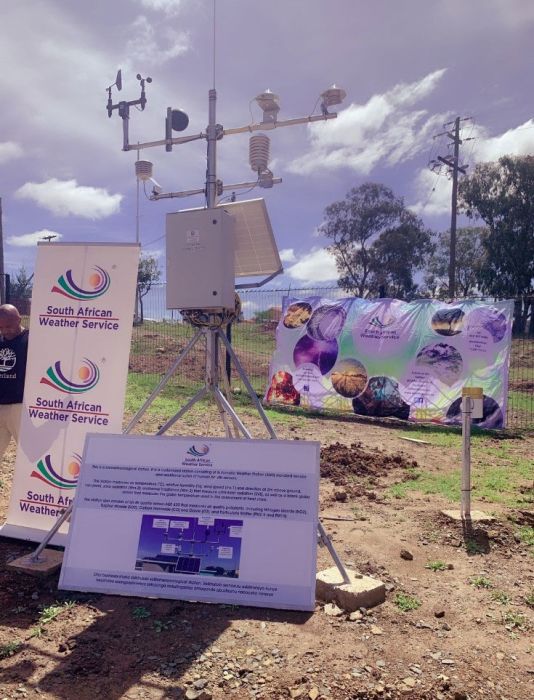



南アフリカ科学イノベーション省(DSI)と基礎教育省、東ケープ州教育省などのパートナーは、南アフリカ東ケープ州コフィンババに、先進的なグリーンテクノロジーを備えた最先端の科学センターを開設しました。高等教育・科学・イノベーション大臣のブレイド・ンジマンデ博士と東ケープ州首相のオスカー・マブヤネ氏、その他の代表者らが、2021年10月6日にこの施設を正式にオープンしました。
注目の展示の 1 つは、Campbell Scientific アフリカ (CSAF) が設計および構築した生物気象観測所でした。11 年生の生徒たちは、学校で学んだことを現実世界と結び付ける科学センターが地域にあることを喜んでいました。この施設は、地区内の 26 校の高校の生徒たちが科学技術を学ぶことを支援および奨励します。
「このプロジェクトは、水と衛生、エネルギー、栄養、健康に関する技術革新を試行することで、農村地域の教育を改善することを目指していました。この科学センターは、インタラクティブな展示を収容し、実践的なアプローチを使用して、コフィンババと周辺の村の人々が実験し、科学に取り組むことができる教育施設になります。これは科学を人々に届ける表現であり、草の根の革新の可能性も高めます。センターはまた、科学コミュニケーションのインフラストラクチャの不可欠な部分になります」とンジマンデは述べました。
この科学施設は、テクノロジーを実証するだけでなく、設計プロセス全体を通じて最新の持続可能なテクノロジーを取り入れています。建物のパフォーマンスを最大化するためにテクノロジーを選択して組み合わせることで、この建物はネットゼロエネルギーと水を超える成果を達成します。つまり、年間の敷地内生産量(屋上のソーラーパネルと小型風力タービン経由)が消費量を上回ることになります。これは、南アフリカでこれを実現している数少ない建物の 1 つです。さらに、この建物はハイブリッド給水に依存しており、雨水を収集し、中水をトイレ用にリサイクルすることで、電力網への依存を減らしています。軽量鉄骨フレームと断熱コンクリート複合材を使用して建てられたこの構造は、暖房と冷房を太陽熱煙突に依存しているため、HVAC も不要です。センターが建てられた土地は、インツィカ イェトゥ地方自治体から寄贈されました。
南アフリカ気象局 (SAWS) の健康応用主任科学者である Katlego Ncongwane 氏は、このセンターの一部である科学的イノベーションの 1 つである生物気象ステーションの先頭に立っています。このステーションで使用されている Campbell Scientific の機器には、CR1000X 測定および制御データロガー、03002-L 風監視セット、HygroVue™5 デジタル温度および相対湿度センサー、熱ストレス測定用 BLACKGLOBE-L 温度センサー、統合アンテナ付き GPS16X-HVS GPS 受信機などがあります。Cofimvaba 生物気象ステーションは、ケイモエス、マヒケング、トホヤンドゥに新たに設立された生物気象ネットワークの一部であり、統合気象監視を提供し、健康リスクの総合的な視点を提供します。生物気象ステーションのネットワークは、CSAF が開発した多くのネットワークの 1 つです。